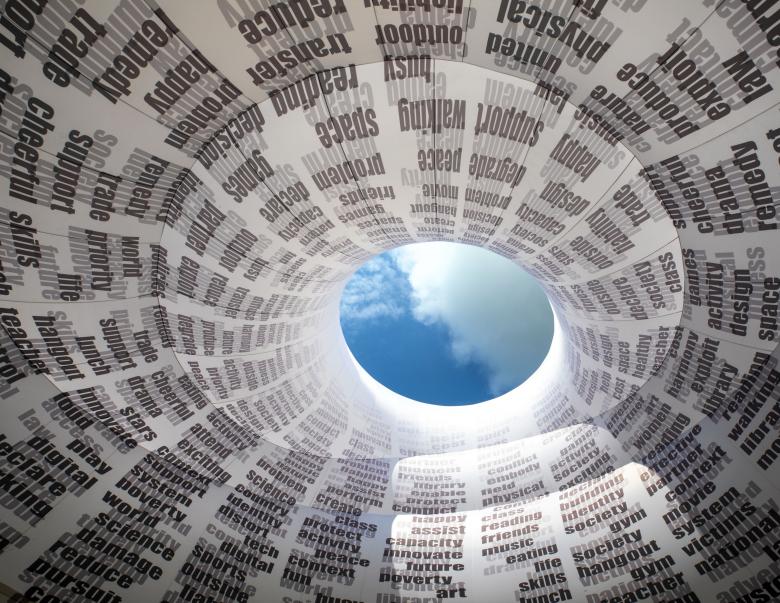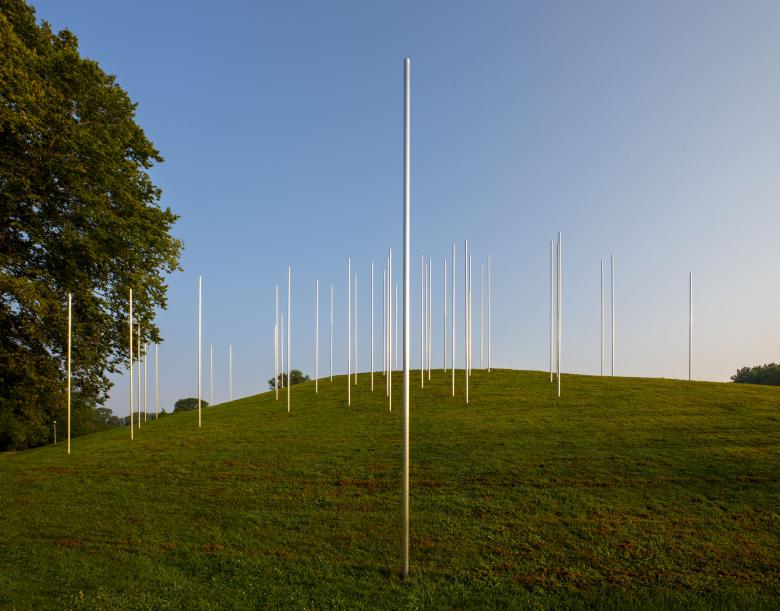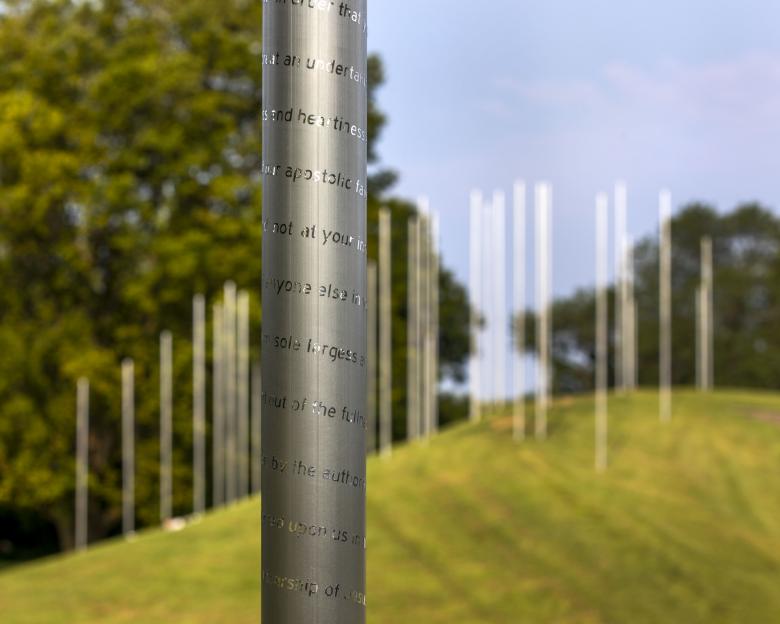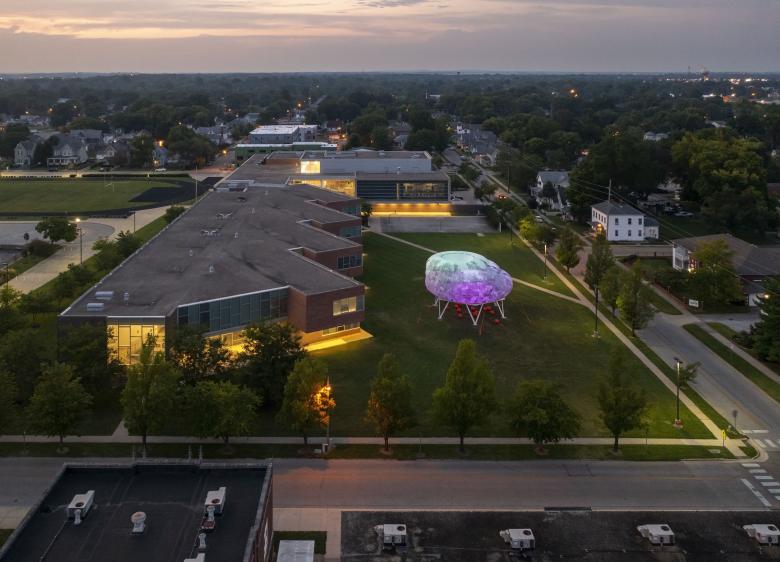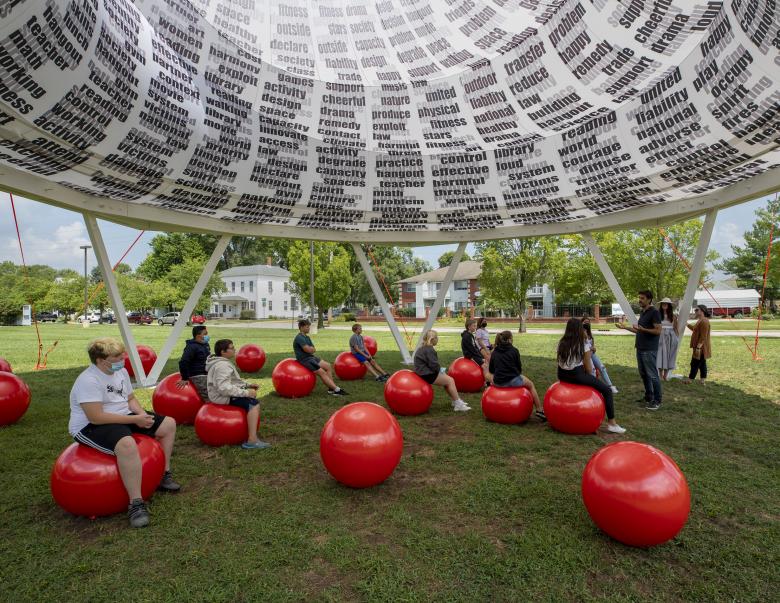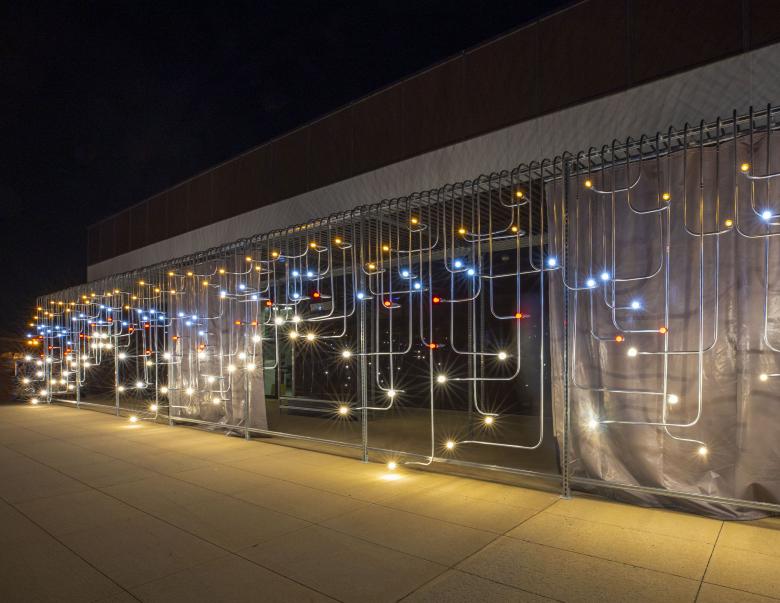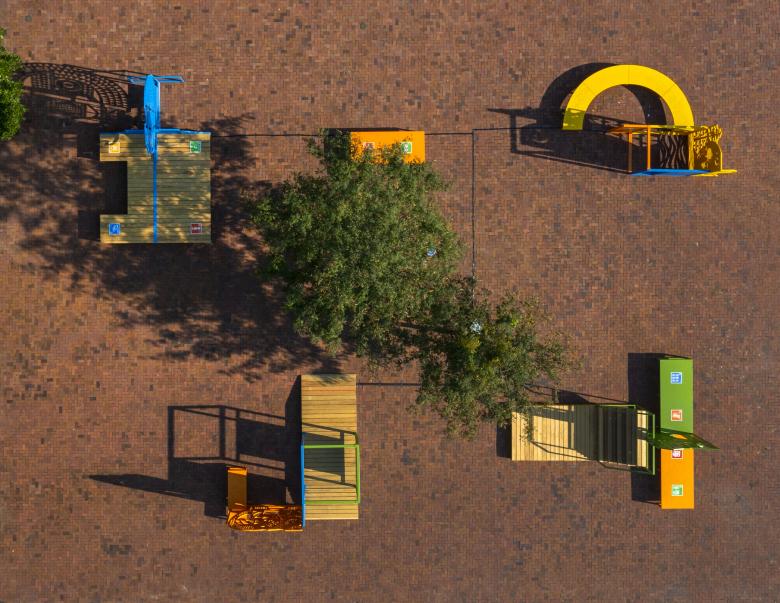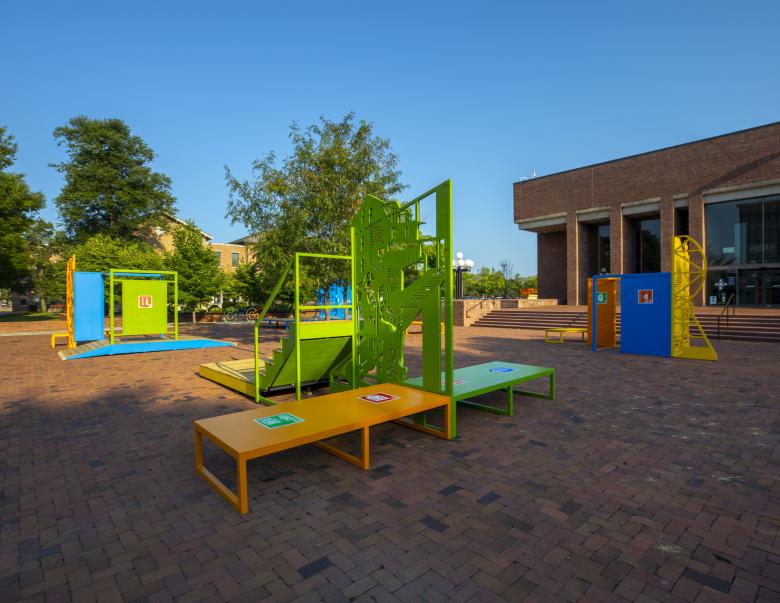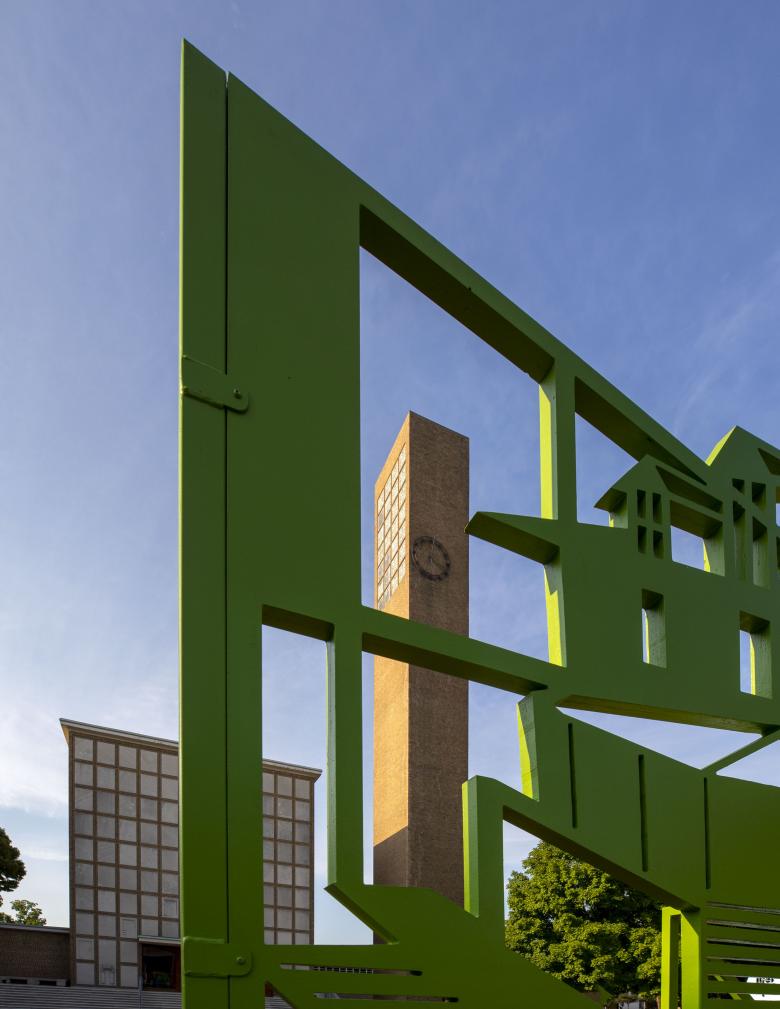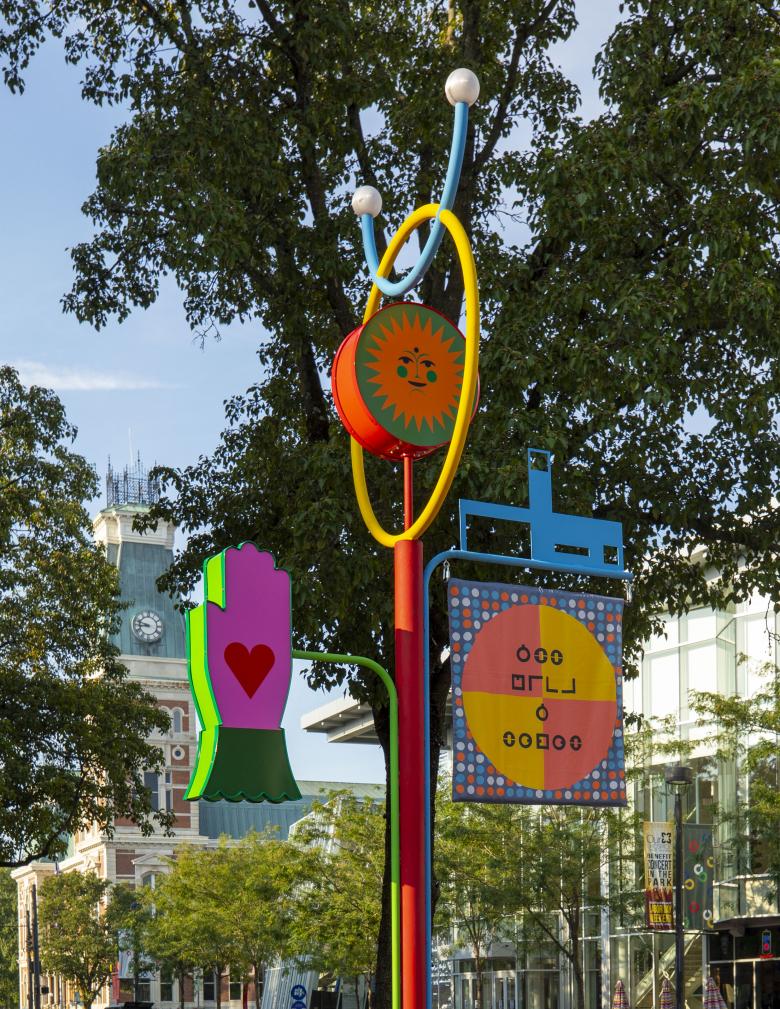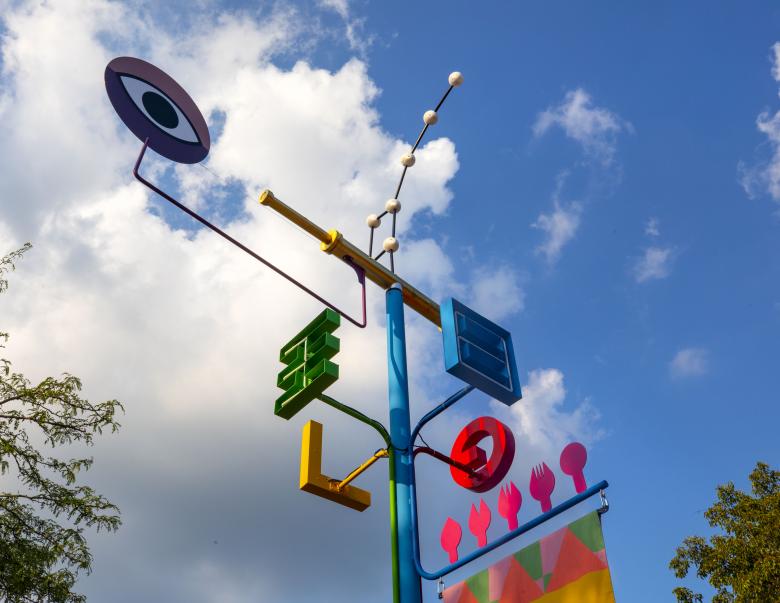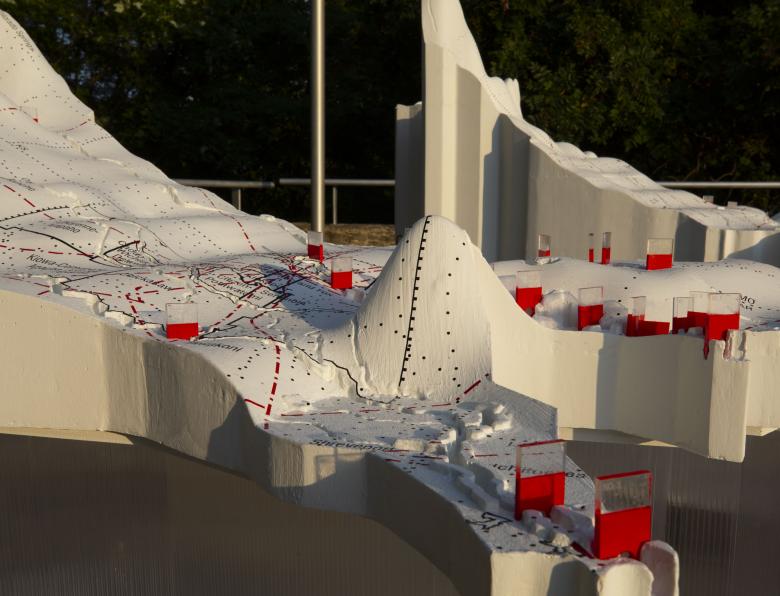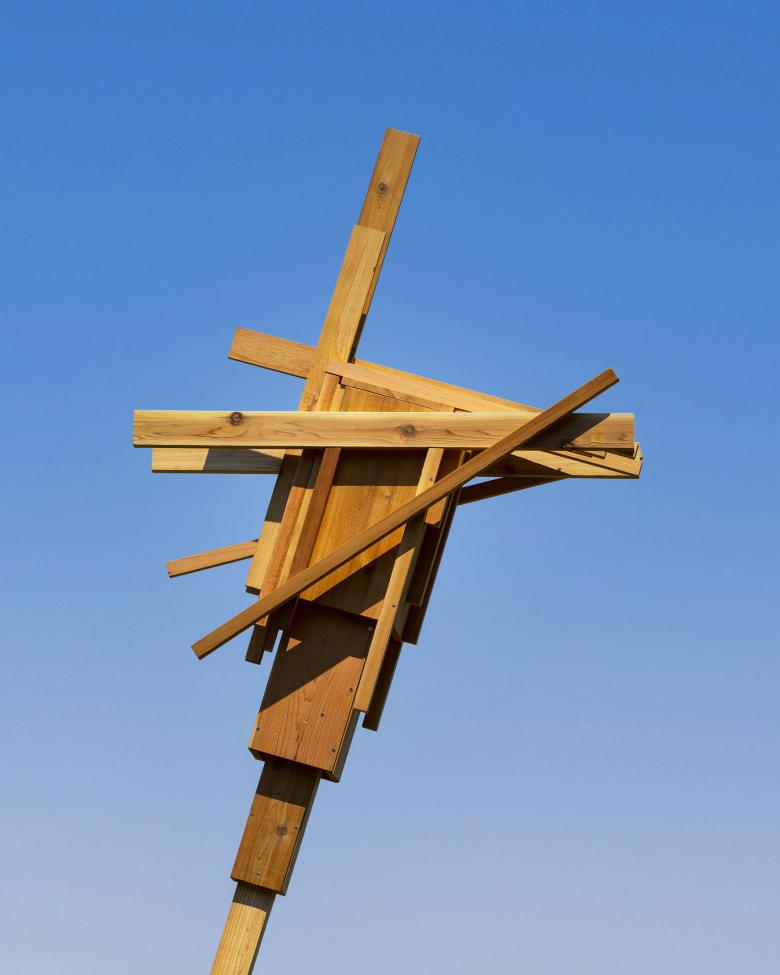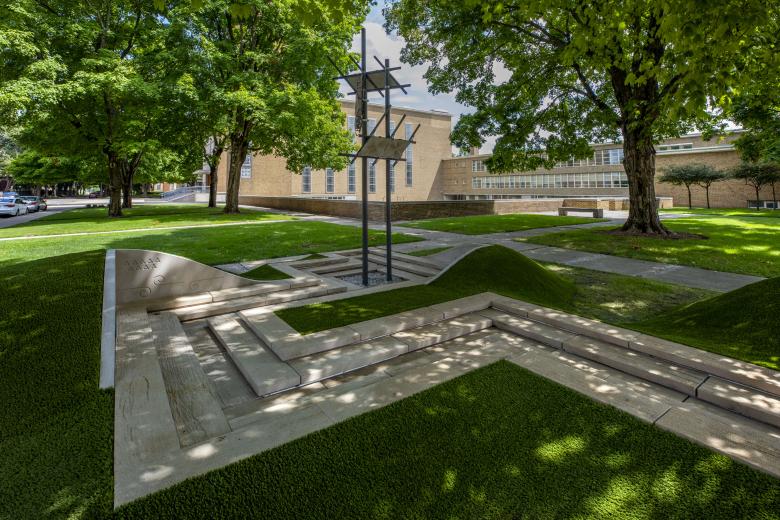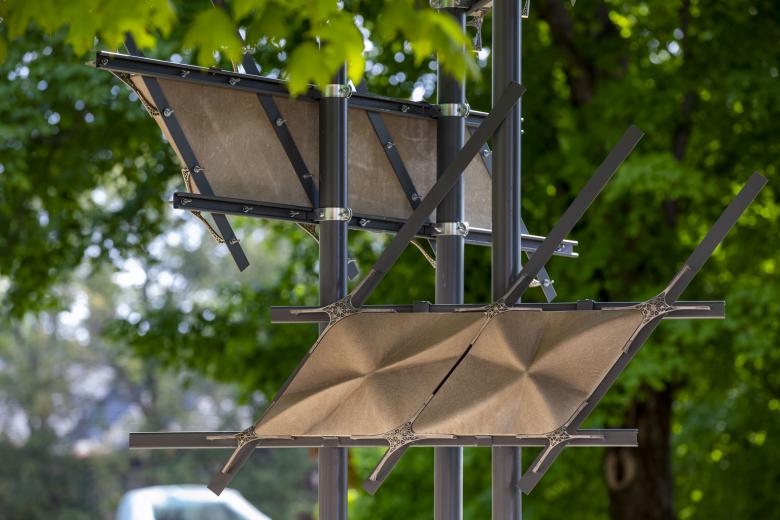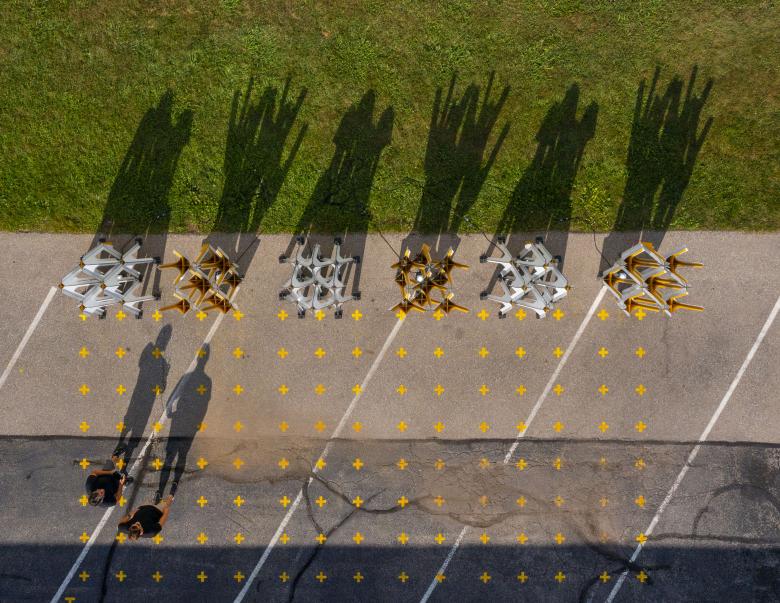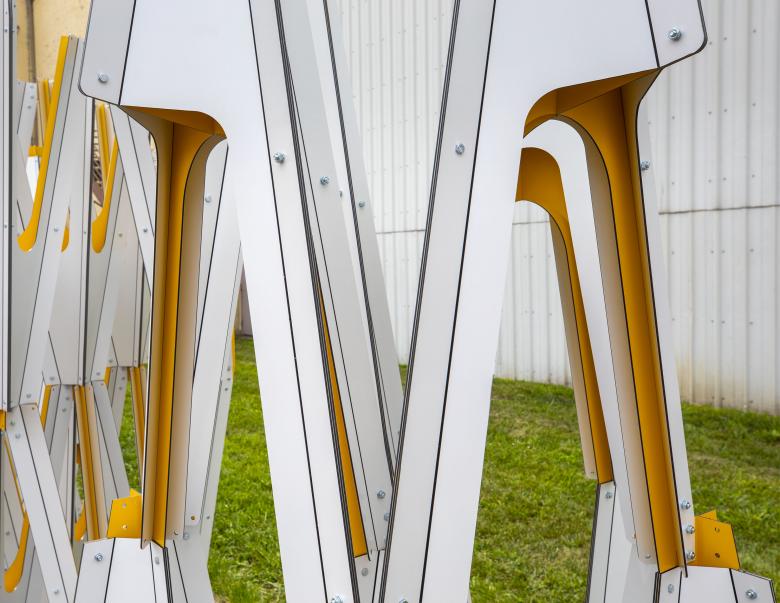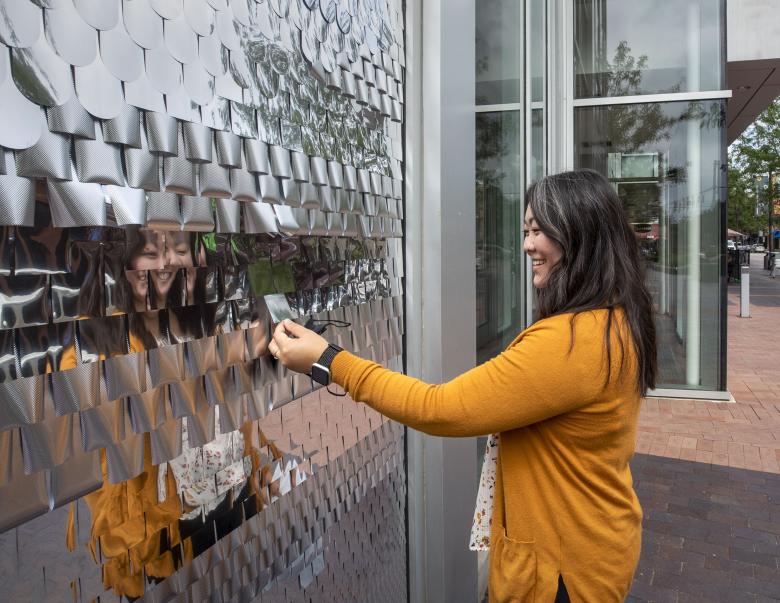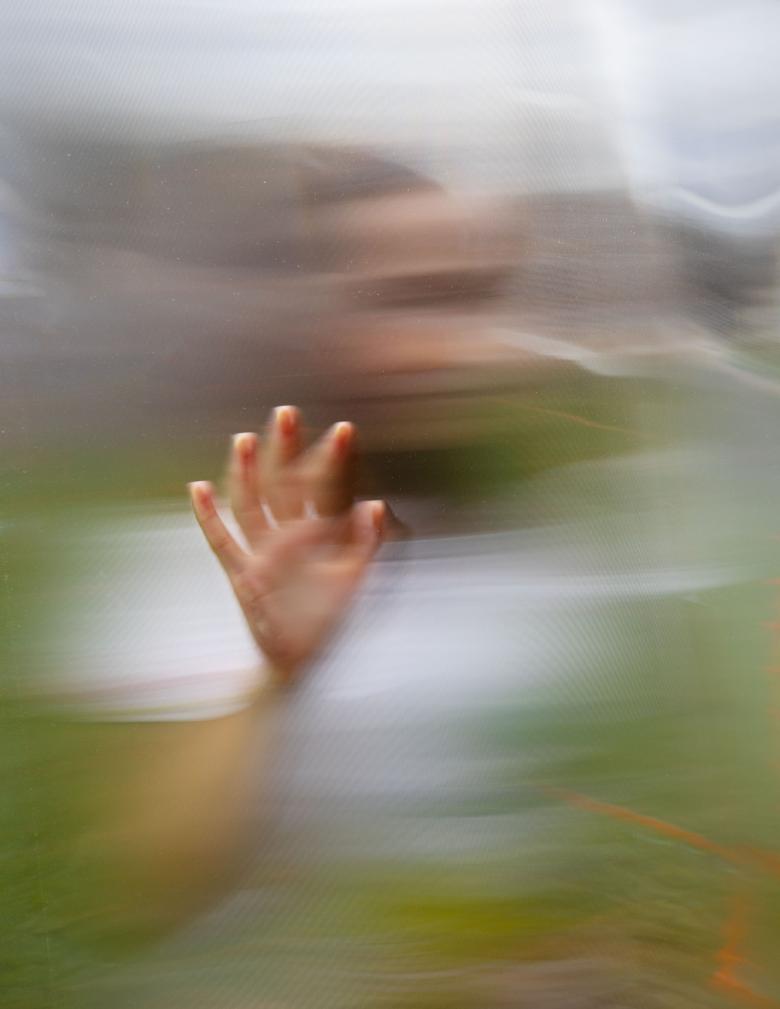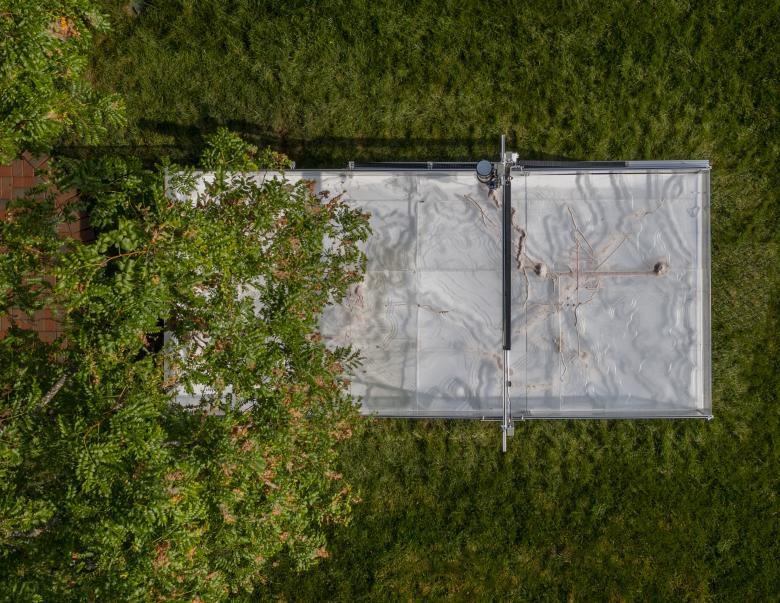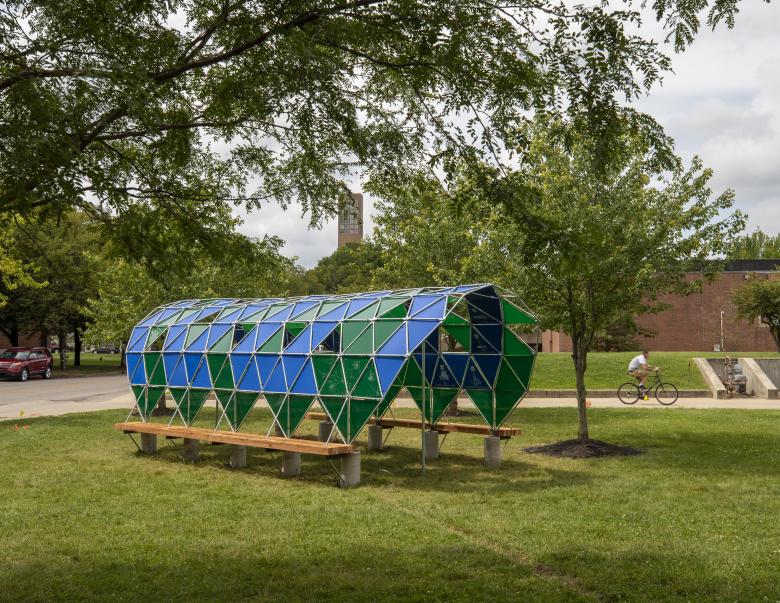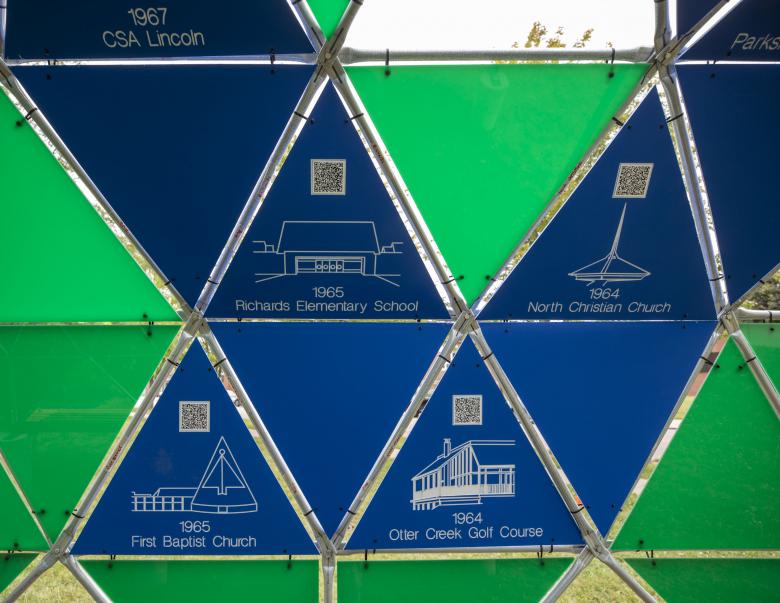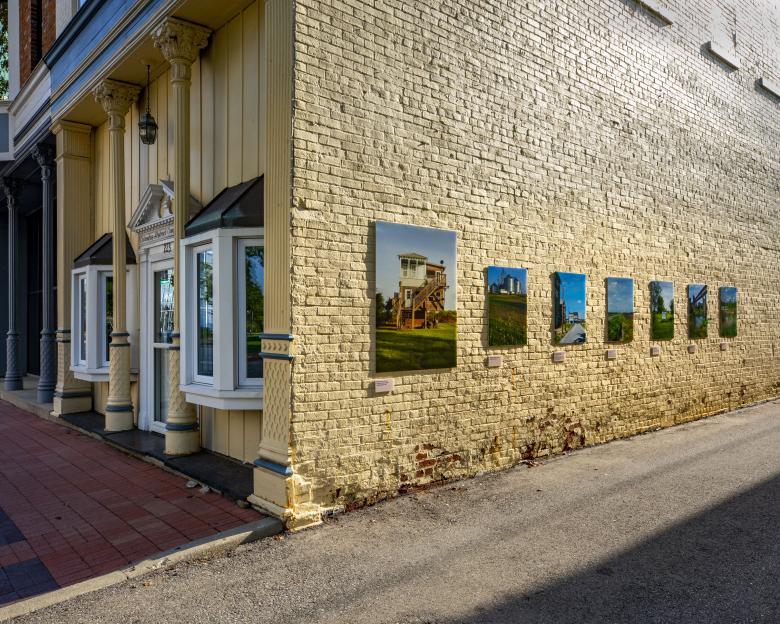'New Middles' Across Columbus
The third Exhibit Columbus exhibition opened on Saturday, August 21, with numerous site-specific installations and photography on display across Columbus, Indiana, the small town that is famous as a mecca of Midwestern modern architecture. The three-month exhibition, curated by Iker Gil and Mimi Zeiger, is themed New Middles: From Main Street to Megalopolis, What is the Future of the Middle City?
For a city that just surpassed 50,000 residents in the 2020 census, Columbus has an unnaturally high number of buildings designed by notable modern architects, from Eliel and Eero Saarinen, Richard Meier, Harry Weese, and Robert Venturi, among others last century, to Deborah Berke, Carlos Jimenez, KPF, Cesar Pelli, and others this century. The density of quality modern architecture can be attributed to Cummins Inc. and its longtime leader J. Irwin Miller, who transformed Columbus for decades before his death in 2004 by commissioning architects to design buildings — both corporate and public — that would entice people to live in a small city in the middle of Indiana. Over time, those same buildings have made Columbus a tourist destination — for architects, at least — a trait accentuated by the existence of Exhibit Columbus and the way the exhibition's installations engage with some of the town's notable buildings.
Cummins, a multinational corporation that manufactures engines and generators, is still headquartered in Columbus, where it backs the two-year cycles of symposia, presentations, and exhibitions that comprise Exhibit Columbus. Established in 2016, the exhibition consists of four main parts, one of which is named for the founder of Cummins and his wife:
- J. Irwin and Xenia S. Miller Prize
- University Design Research Fellowship
- High School Design Team
- Photography Fellows
Below is a short tour through the four main parts of this year's Exhibit Columbus (a fifth part, Wayfinding and Environmental Design, is by Jeremiah Chiu and consists of a catalog, a map, the website, and other pieces of graphic design). Within each part, the installations are in alphabetical order by designer. The 2021 exhibition, New Middles: From Main Street to Megalopolis, What is the Future of the Middle City?, is on display from August 21 to November 28, 2021.
2021 J. Irwin and Xenia S. Miller Prize Recipients
Located at Mill Race Park (Michael Van Valkenburgh and Stanley Saitowitz, 1992), Columbus Columbia Colombo Colón is billed as "an investigation of relationships" focused on "Christopher Columbus and the places named after him."
The installation is made up of poles that represent distinct places around the world, inviting visitors to move between them "and reflect on what is a collective story." Columbus, Indiana, is not just a small city in Indiana, the designers contend, it is "part of a larger complex of meaning."
Cloudroom was literally shaped by the students and teachers at Central Middle School (Ralph Johnson/Perkins & Will, 2007) where it is located: their input helped Ecosistema Urbano shape a pavilion that "encourages new modes of learning and raises awareness about environmental challenges."
The elevated, inflatable structure that is open to the sky (photo at top) functions as an outdoor classroom but also acts as an illustration of environmental conditions, with climate sensors linked to colored lights that change based on inputs. Words written across the "cloud" are taken from the 1992 Rio Declaration on Environment and Development and a survey of Central Middle School students about their "preoccupations, hopes, and dreams for the future."
Made from a lattice-work of conduit and lights, Midnight Palace was designed for the "night owls" of Columbus, such as "second and third-shift workers, restaurant workers, truckers on I-65, parents of newborns, and residents with families overseas."
Sited on a shallow plaza in front of the Cummins Sears Building, the installation features a "wall of light" and screens that will host community programming.
Archival/Revival is located on the plaza of the Cleo Rogers Memorial Library (I.M. Pei, 1969), a building that was host to a number of "transformative events" not long after it opened, including an "African Art Exhibit" that was part of a program called "Africa and Black and White America."
The colorful and sculptural installation by Olalekan Jeyifous was designed as "a series of engaging, interactive, and programmable 'thresholds/moments'" that explore these early events and "allow visitors to explore their historical significance to our present and future realities," both in person and through augmented reality documents and artworks via scannable QR codes.
The site for Alternative Histories is Washington Street, which runs north-south through Downtown Columbus and has been a site for beautification schemes and other urban design schemes from the 1960s to the present. The pieces by Sam Jacob Studio "add a new layer of civic design to the city."
Inspired by the history of J. Irwin Miller in Columbus, Thomas More's 16th-century book, Utopia, and even roadside America, Alternative Histories combines multiple references to express interconnected histories of place and "to excavate and propose new narratives that can help shape how we imagine the future."
2021 University Design Research Fellows
Tracing Our Mississippi represents the Mississippi River watershed through four models, each one of a different river basin (including the Ohio River, which connects Columbus to the Mississippi). The models highlight the many pieces of infrastructure "controlling the Mississippi’s landscapes, communities, and resources."
Sited in Mill Race Park, To Middle Species, With Love consists of roughly a half-dozen structures in Indiana hardwood that offer perches for birds. They are anchored to boulders that provide shelter for other "middle species" that are "common in our communities and ecosystems, yet often remain invisible in our imaginations."
Located on the lawn of the First Christian Church (Eliel Saarinen, 1942), LaWaSo Ground — the name combines (La)nd, (Wa)ter, and (So)il — is a "a contemporary memorial and a community ground" that "draws from an acknowledgment of the silenced and suppressed voices of the past, and advocates for more diverse inclusion in the future."
Sitting in the parking lot next to the late-19th-century Crump Theatre, Spectral may look cool from above, but it was actually designed to be invisible from such a vantage point. Made from infrared obscuring materials, the designer call Spectral "a public gathering place—a 'safe space' where visitors' thermal activity is shielded from the view of multispectral cameras."
Although it is mounted directly on the Commons, a 2011 building designed by Koetter Kim, Window Dressing refers to its predecessor: the 1970s Commons and Courthouse Center designed by Cesar Pelli and Norma Merrick Sklarek for Gruen Associates. Mylar film shingles are meant to recall the mirrored buildings of that Late Modern era.
While This Appearance Is ____ is grounded theoretically in the writings of Hannah Arendt, the "space of appearance" and disappearance enabled by the maze of curved walls made with lenticular plastic sheets looks just plain fun. Not surprisingly, Sheppard and White collaborated with students at Lincoln Elementary School on the project, to "develop new games for all ages."
Calibrate, located in the courtyard of the late-19th-century Franklin Square, is a "robotic drawing machine" fed by accumulated environmental data from Columbus and the broader Ohio River watershed. It is meant to reveal "rhythms in the environment, climate, current of the river, and how we move through space."
High School Design Team
A geodesic tunnel was created by students at BCSC as a space that references rivers and their importance in the formation of "middle cities." The inside of Tunnel Vision features important works of architecture in Columbus that visitors can learn more about by scanning QR codes.
Photography Fellows
The 2020-21 Exhibit Columbus Photography Fellows are Virginia Hanusik (New Orleans) and David Schalliol (Minneapolis), who "have each been documenting parts of Columbus, the Heartland, and the Mississippi watershed from social, economic, and environmental perspectives." Their photographs are on display in various places around Columbus.
